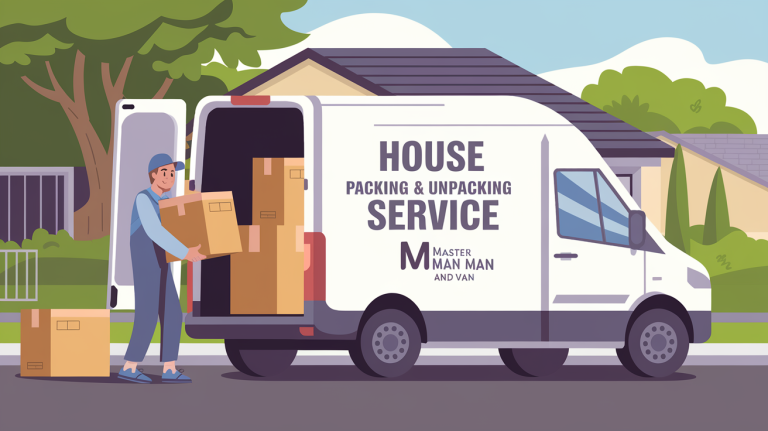Hire a Removals Company or Do It Yourself: A Complete Guide
The big question is, should you hire a removal company or tackle the move yourself? Both choices come with their own advantages and challenges. In this post, we’ll explore the pros and cons of each option, offer detailed insights, and provide a practical guide to help you make the best choice for your situation.
Key Factors to Hire a Removal Company
Deciding between hiring a removal company or going the DIY route depends on several important factors. Here’s what to keep in mind:
- Time: How much time do you have to manage your move?
- Budget: Can you afford a professional moving service, or do you need a more budget-friendly option?
- Stress Level: Are you looking for a hassle-free experience, or are you okay with handling each detail yourself?
- Volume of Belongings: How much stuff are you moving? For larger volumes, professionals may be more efficient.
- Distance: Are you moving locally, or is it a long-distance move?
By evaluating these aspects, you can better determine whether hiring a removal company or doing it yourself is the right choice for your move.
Pros and Cons of Hiring a Removals Company
Hire a removal company is often the go-to choice for people who want to reduce the stress and physical effort of moving. Here’s a look at the benefits and potential downsides of this option.
When Hiring a Removals Company Makes Sense
- Complex Moves: If you’re moving long distances or have heavy items, professionals can more effectively manage the logistics.
- Limited Time: Removal companies offer time-saving solutions for those with tight schedules.
- Valuable or Fragile Items: Moving valuable items (like antiques or pianos) is safer with professionals who know how to handle them.
Advantages of Hiring Professionals
- Efficiency and Experience: Professional movers are trained to pack, load, and transport quickly and safely, reducing your time and effort.
- Insurance and Liability: Most moving companies offer liability insurance, giving you peace of mind in case of accidental damage.
- Reduced Physical Strain: Moving is physically demanding. Hiring movers means you avoid the risks of lifting heavy furniture or fragile items.
Potential Downsides of Hiring a Removals Company
- Higher Cost: Professional moving services often have a price tag, including labor fees and service charges. The final cost depends on factors like distance and volume.
- Scheduling Challenges: Booking movers may require advance planning if you’re moving during peak seasons.
- Less Control: Handing over control to movers may feel uneasy, especially when trusting them with personal belongings.
Pros and Cons of a DIY Move
Handling a DIY move is popular for people who prefer to manage the process themselves or save money. Here are the main pros and cons.
When a DIY Move Makes Sense
- Short Distances: Moving locally with fewer items? DIY moving can be manageable and cost-effective.
- Budget-Friendly: A DIY move minimizes expenses for those on a tight budget.
Advantages of a DIY Move
- Cost Savings: DIY moves cut out labor costs, and you only pay for essentials like packing materials and van rentals.
- Full Control: You’re responsible for every item, ensuring nothing gets left behind or mishandled.
- Flexibility: DIY moves allow you to work at your own pace, giving you more control over the schedule.
Challenges of Moving Yourself
- Physical Demands: Packing, lifting, and loading furniture can be exhausting, and heavy lifting increases the risk of injury.
- Time and Energy: Packing, loading, driving, and unpacking require significant time and energy without a team.
- Lack of Insurance: Without professional movers, damage risk is on you unless covered by your personal insurance.
Comparing Costs: DIY vs. Hiring a Removals Company
Understanding the cost differences between hiring movers and doing it yourself can help you make a more informed decision.
| Expense | DIY Move | Hiring a Removals Company |
|---|---|---|
| Van Rental | $100-$500 | Included in price |
| Fuel Costs | $50-$200 (varies by trip) | Included or additional |
| Packing Supplies | $100-$300 | Usually included or extra fee |
| Labor Costs | $0 (you do the work) | $100-$200 per hour |
| Insurance Coverage | Optional ($10-$50) | Typically included |
| Total Estimated Cost | $300-$1,050 | $500-$2,500+ |
Note: These estimates vary based on move distance, amount of belongings, and moving season.
Cost Breakdown for DIY
- Van Rental Costs: Rental prices depend on van size, mileage, and duration.
- Fuel Costs: Factor in distance, gas prices, and vehicle fuel efficiency.
- Packing Supplies: Boxes, bubble wrap, and packing tape expenses can add up.
- Additional Costs: Potential expenses like food, tolls, or assistance from friends/family.
Cost Breakdown for Hiring a Removals Company
- Flat or Hourly Rates: Removal companies charge flat or hourly rates, depending on distance and item volume.
- Distance-Based Costs: Cross-country moves are pricier than local moves due to distance.
- Packing Services and Extra Fees: Additional services like packing, storage, and insurance can raise costs.
Practical Tips for Hiring a Removals Company
If you’re leaning toward hiring a removal company, following these tips can help you choose the right one.
Researching Companies
- Check Reviews and Ratings: Platforms like Google, Yelp, and Better Business Bureau (BBB) offer reviews to help you gauge customer satisfaction.
- Get Multiple Quotes: Comparing at least three quotes allows you to find the best value.
- Verify Insurance and Licensing: Reputable companies have licenses and offer insurance coverage for damages.
Questions to Ask Potential Movers
- What Type of Insurance Do You Offer?
- Coverage options vary; ask about liability, replacement, and value protection.
- How Do You Handle Estimates?
- Make sure estimates are accurate and clarify any potential extra charges.
- What Packing and Unpacking Services Are Available?
- Some companies handle all packing, while others provide partial or no packing.
Essential Tips for a Successful DIY Move
If a DIY move seems the best choice, some planning and organization will go a long way.
Organize and Plan Ahead
- Create a Packing Schedule: Break down the packing into phases. For instance, pack one room per day to avoid last-minute rush.
- Enlist Help: Arrange help from friends or family. Be clear on dates and the type of assistance you need.
Packing Tips for Fragile and Heavy Items
- Use Proper Supplies: Invest in quality boxes, bubble wrap, and packing tape to secure your items.
- Label Boxes and Assign Rooms: Clearly mark boxes to simplify unpacking.
Efficiently Load and Unload the Van
- Plan the Layout: Place heavy items on the bottom and fragile items on top. Secure everything to prevent movement during transit.
- Safety Tips: Lift heavy items carefully, and don’t overexert yourself. Using dollies or straps can ease the process.
Case Studies: Real-Life Moving Experiences
Case Study 1: Hiring a Removals Company for a Long-Distance Move
Scenario: Sarah needed to move her 3-bedroom house from New York to Florida. With a full-time job and limited time, she hired a removal company.
Outcome:
- Time Saved: Movers completed the packing and loading in just one day.
- Stress Reduction: Sarah could focus on work while the movers handled the logistics.
- Cost: $3,000, covering packing, transport, and insurance.
Takeaway: Hiring a removals company allowed Sarah to save time and focus on other responsibilities, despite the higher cost.
Case Study 2: DIY Move for a Short-Distance Relocation
Scenario: Jake was moving from one apartment to another within the same city. He chose to rent a van and handle the move himself.
Outcome:
- Cost Savings: Jake spent $200 on van rental and packing materials.
- Physical Demands: Packing and loading took a full weekend, leaving him exhausted.
- Control and Flexibility: Jake appreciated having full control but admitted the process was physically challenging.
Takeaway: For short-distance moves, DIY moving can be budget-friendly, though physically demanding.
Decision-Making Guide: Which Option is Right for You?
After considering the pros and cons, it’s time to decide. Use the following checklist to guide your choice.
Decision Checklist
| Factors | DIY Move | Hire a Removals Company |
|---|---|---|
| Moving Distance | Short distance | Long-distance |
| Budget Constraints | Tight budget | Budget available |
| Time Availability | Flexible schedule | Limited time |
| Physical Capability | Physically capable | Prefer to avoid physical work |
| Complexity of Move | There are a few items, a simple move | Multiple large or fragile items |
Conclusion
Hiring a removal company and opting for a DIY move has unique benefits and drawbacks. Whether you’re seeking convenience, control, or cost savings, weigh your priorities against the options available. With careful planning, either choice can lead to a smooth, successful move.
Remember: The key to a successful move lies in assessing your personal needs, preparing adequately, and choosing the right option for your specific situation.

Muhammad Zafar Sharif is an accomplished Electrical Engineer who has successfully transitioned into the digital realm. With a strong technical background, he has cultivated expertise in two key areas of modern technology: App Development and Search Engine Optimization (SEO). Leveraging his analytical skills and problem-solving abilities honed through his engineering education, Muhammad excels in optimizing digital content for search engines. His comprehensive understanding of SEO principles allows him to enhance website visibility and improve online presence for businesses across various industries.





